Even in the automotive industry, many people are confused about buffing and polishing. Because these processes both improve the appearance of a car's paint job, some people even use the terms interchangeably. So what is the difference between buffing and polishing? We've done the research for your reading pleasure.
As surface finishing processes, both buffing and polishing aim to achieve smoother and shinier surfaces. However, polishing is a more aggressive process compared to buffing.
Would you like to know more about the differences in the steps and results of these car care processes? If so, then we've got you covered. Do read on and we'll help you understand more.
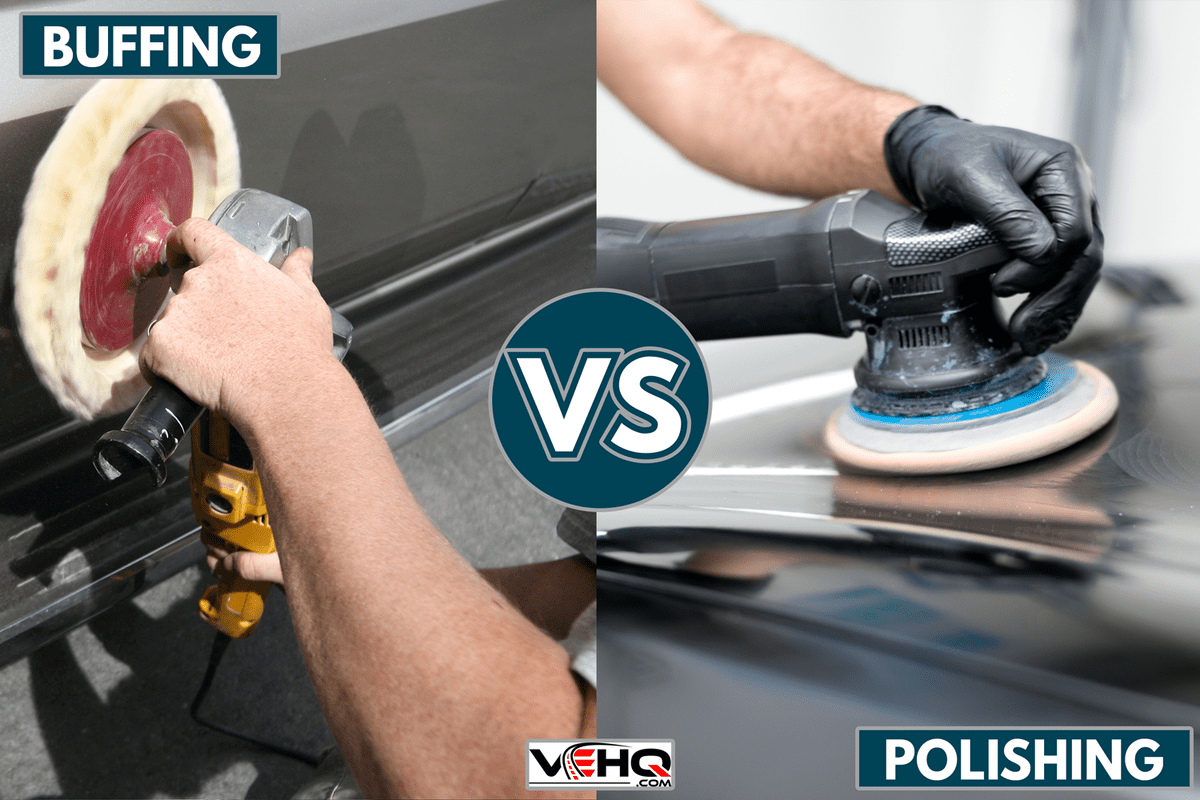
What Does Buffing And Polishing A Car Do?
Buffing and polishing are not the same. Even though both processes involve removing imperfections from a car's paint, they differ in aggressiveness, materials used, and purposes.
Buffing refers to removing swirl marks, fine scratches, and contaminants like oxidation from the surface of your vehicle’s clear coat. If your new car or paint gets these slight imperfections, then it needs buffing.
On the other hand, polishing refers to removing deeper scratches or defects in your car's paint. These imperfections usually come from environmental factors such as UV rays, water spots, as well as road salt.
Both buffing and polishing work only on the car's topmost clear coat. In case the paint's damage has reached the base color coat, then it's probably time for a paint correction job or even a repaint.
Buff For Dull Paint Or Light Scratches
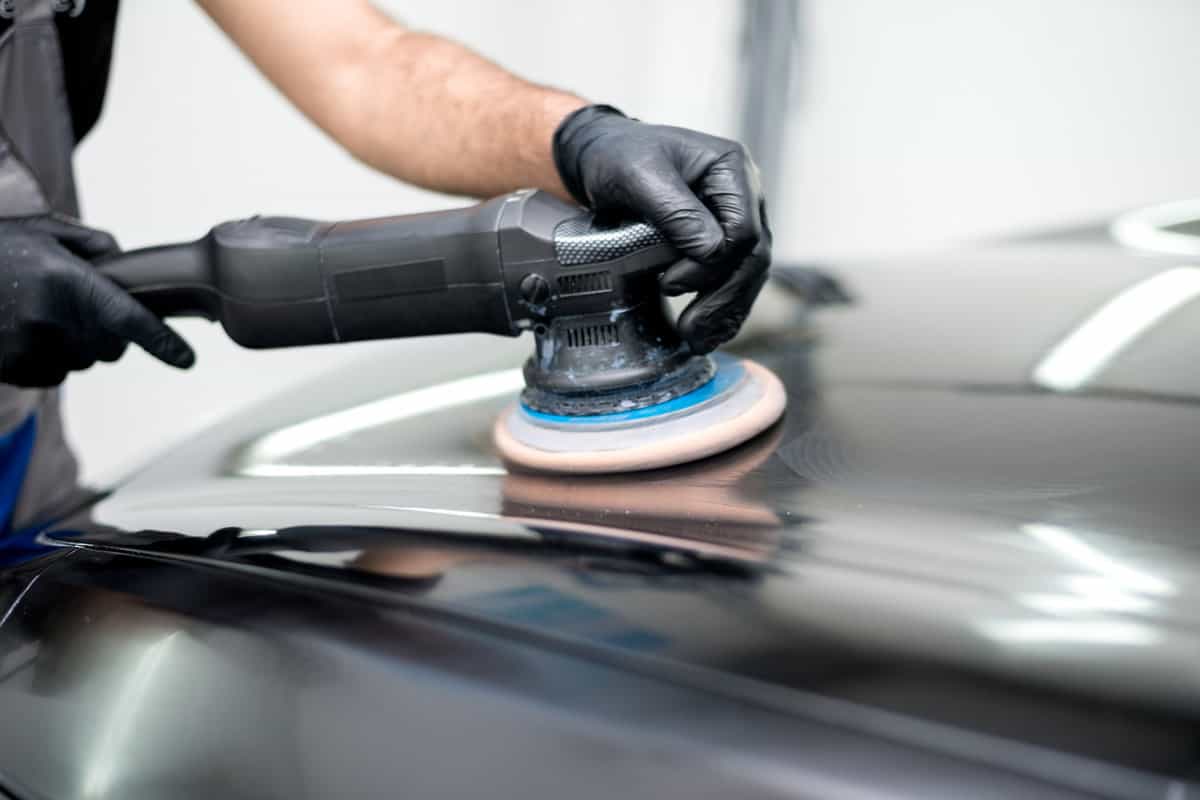
Buffing is a great way to remove light swirl marks, scratches, and other minor blemishes in the clear coat. These slight imperfections usually appear on the topmost part of the clear coat.
Buffing is also a good final stage in multi-step polishing projects. Because polishing uses higher-grit materials and chemical compounds, the process can leave tiny swirl marks and micro-scratches on the clear coat.
Finally, buffing is also an effective method for restoring the shine of your car’s finish every few months. Normal driving and carwashes inevitably leave slight paint imperfections over time.
What Materials Do I Need For Buffing?
When buffing, you'll want to use either a 2-in-1 polish-wax product or a polish-sealant combination product.
Check out this car polish and wax 2-in-1 product on Amazon.
Polish-wax compounds focus on removing very light scratches and blemishes. On the other hand, polish-sealant combinations are better for light to moderate scratches as the sealant fills up the shallow gaps on the clear coat.
See the deal on this polish and sealant combo product on Amazon.
You may choose to buff your car by hand if you have the time, endurance, and patience. Buffing by hand is very tiring and time-consuming, and it may take you hours or even days to finish buffing your whole car.
Alternatively, you can save time with the use of an orbital buffing or polishing machine. Yes, these machines are both for polishing and buffing.
Check out this top-rated DeWALT buffing/polishing machine on Amazon.
Whether you hand-buff or machine-buff your car, you need to select the right buffing pad or cloth. For example, a buffing pad may look similar to a polishing pad, but the former is much softer.
Polish For Deeper Swirl Marks And Paint Defects
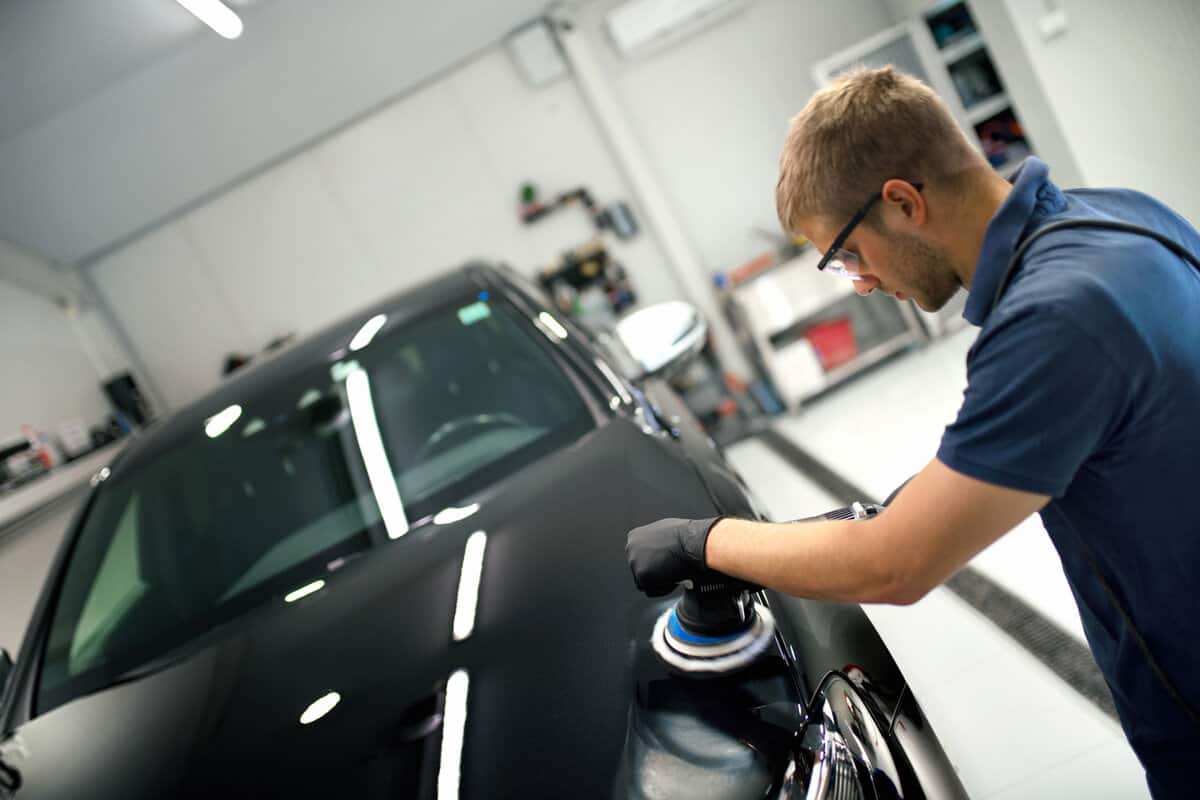
Polishing, like buffing, involves applying a chemical compound to the paint surface of your car. However, polishing is a more aggressive method suited for correcting more severe clear coat paint imperfections.
For example, deep scratches, severe rain marks, and stubborn stains may reach the middle to lower part of the clear coat. Hence, buffing alone cannot remove them due to the mildness of the materials and process.
Polishing uses stronger chemical compounds and higher-grit materials to cut deeper into the clear coat and reach the base of the imperfections.
What Materials Do I Need For Polishing?
Polishing requires a similar set of tools and materials as buffing. However, you will need more abrasive polishing pads and higher-grit polishing compounds in addition to the buffing materials and products.
Some manufacturers sell polishing pads in sets ranging from the coarsest cutting and polishing pads to the finest buffing pads.
Check out this best-selling set of polishing pads on Amazon.
You will need the more aggressive machine pads or hand-held cloth to "cut" the clear coat and polish out the deeper scratches and imperfections. This requires some skill so you may want to practice first.
You can practice by starting with the more inconspicuous sections of your car, like the underside of the rear bumper. Alternatively, you may hone your skills on your older, less frequently-used car.
The aggressive materials will leave fine scratches and swirl marks after polishing. This is where you will use your set of buffing materials and products.
How To Buff A Car For Beginners
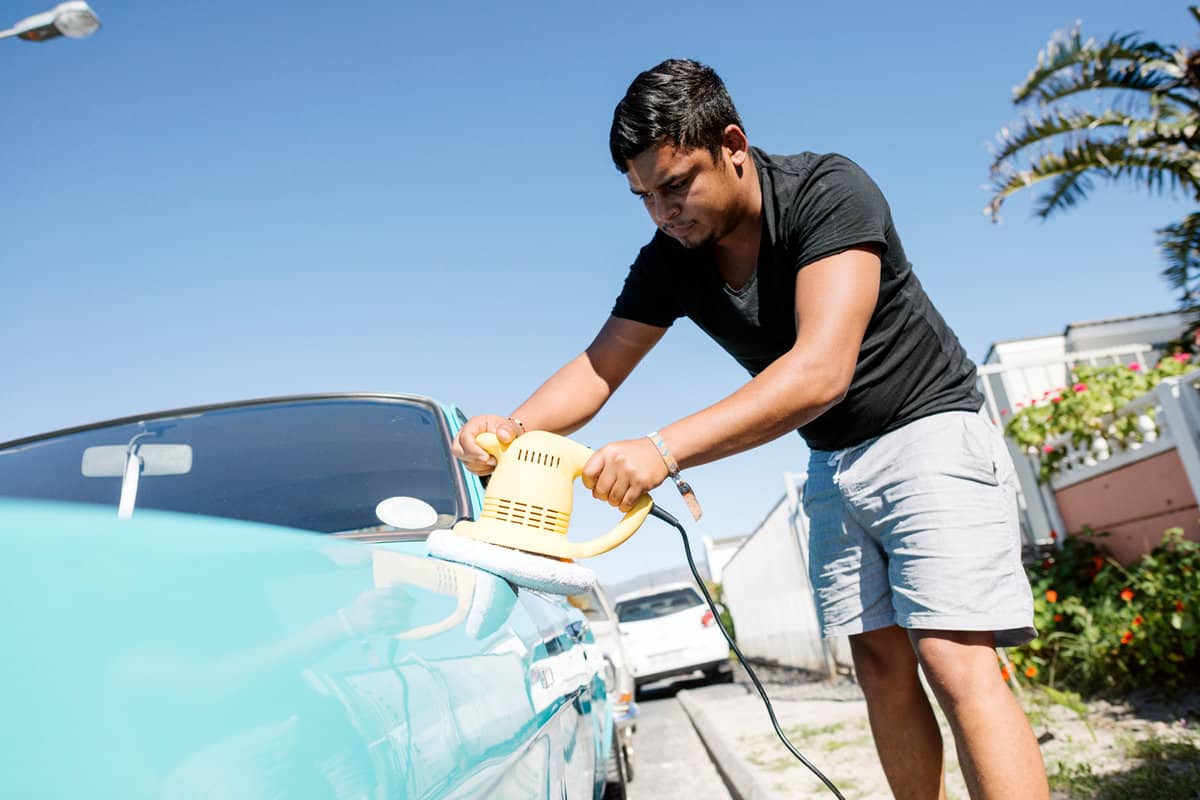
If you like to take care of your car's paint in the comfort of your own garage, then you need to invest in car care tools, materials, and products. Fortunately, these materials are widely available even online.
Assess The Paint Imperfections
Before polishing or buffing your car, you need to assess the scope of the job. Are the imperfections very light, moderate, or heavy? In case the damage is heavy, has it reached beyond the clear coat?
By assessing the paint imperfections, you will know which surface finishing process you need to do. Do you need a buffing job, a polishing job, or more extensive paint correction processes like paint touch-up or panel repainting?
If you know that your paint imperfections only reach the clear coat, then you can proceed with buffing or polishing.
Wash Your Car In An Appropriate Working Area
Next, park your car in a shaded area, preferably in a clean, well-lighted garage with concrete floors. You will need to avoid direct sunlight as well as falling leaves, dust, and mud.
Give your car a good wash and dry. Use a mild car shampoo and separate pieces of microfiber washcloths for lathering and drying. After the car wash, you may also want to use an automotive clay bar.
Clay bars are resin-based, clay-like products that remove dirt and contaminants that car washes cannot.
Buff And/Or Polish Your Car
Once you've assessed the paint imperfections and also prepared your car for detailing, you may now proceed with buffing or polishing. See this video below on how to use your buffing/polishing materials.
After Polishing And Buffing
Polishing and buffing can indeed improve the appearance and surface texture of car paint. However, both of these processes will thin out the clear coat that protects all the underlying paint coats.
To compensate for the thinner clear coat, you will need to apply additional protection on top of your car's paint. Waxes, sealants, as well as ceramic coatings can provide this much-needed protection.
Automotive Wax
Many automotive detailing waxes like carnauba wax come from natural sources such as palm trees. When applied, these waxes form an additional shiny, protective layer against UV rays and contaminants.
When applied and maintained correctly, waxes can protect your paint for three to five months.
Paint Sealant
Unlike palm-based waxes, automotive paint sealants are artificial paint protection products. The sealant's polymers form a shiny, tightly-bonded layer over the clear coat to provide UV and contaminant protection.
Because of their artificial nature, paint sealants usually last longer than waxes. With proper application and maintenance, paint sealants can last up to 12 months.
Ceramic Coating
Last on our protective coatings list is ceramic coating. This type of coating forms the hardest and most impermeable protective layer among the three protective products on our list. It is also the most expensive.
Ceramic coatings typically last for two to five years before your car needs a reapplication. To make the ceramic coating last longer, you can also apply a wax coating on top of the ceramic layer.
When combining protective coatings, always make sure to apply the hardest layer closest to the paint's surface. In this case, ceramic coating is the hardest, while automotive wax is the softest.
How Much Does It Cost To Buff And Polish A Car?
Buffing and polishing require time, patience, and specialty materials. If you lack any or all of these, you can always go to car detailing shops. In most cases, car care professionals can do the job better and faster.
Buffing costs between $50 and $150 for average-sized passenger cars, depending on the severity and size of the paint imperfections. On larger vehicles like minivans and SUVs, you may spend more.
On the other hand, polishing is a much more complicated and tedious process that requires more skill. Moreover, multi-step polishing may even require a full buffing job towards the end of the process.
In short, polishing is generally more expensive than buffing. You can expect to pay north of $300 for this service, depending on the vehicle size as well as the intensiveness of the surface finishing job.
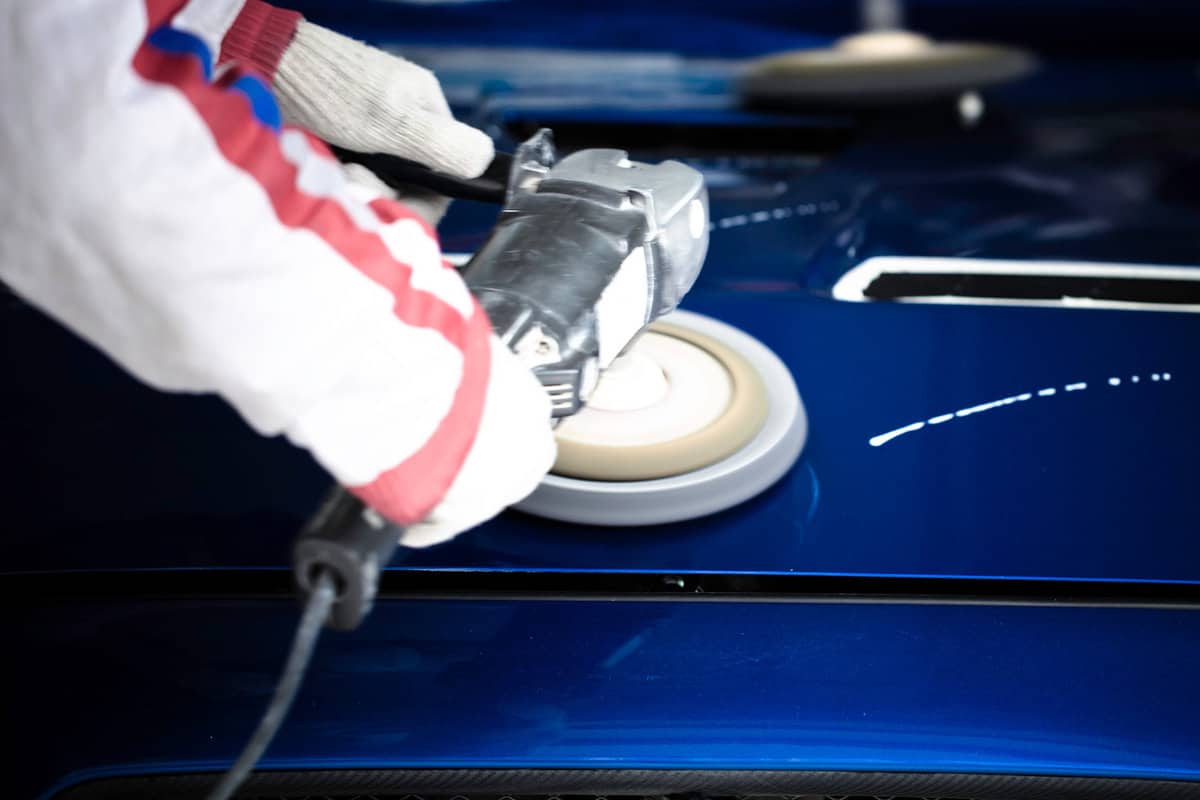
Wrapping Up
Buffing and polishing are both surface finishing processes. However, buffing can only correct mild paint imperfections. Because polishing uses more abrasive chemicals and materials, it can correct more severe paint surface problems.
Thank you very much for reading. We hope that we were able to help you understand the differences between car buffing and polishing.
If you would like to find more interesting reads about car paint and other automotive topics, then please check out these great articles below.
Super White Vs. Blizzard Pearl Car Paint – What’s The Difference?





Very Well Explained the difference between the two. When deciding between buffing and polishing, it’s important to consider the condition of your car’s paintwork and the level of imperfections that need to be addressed.
Thanks!